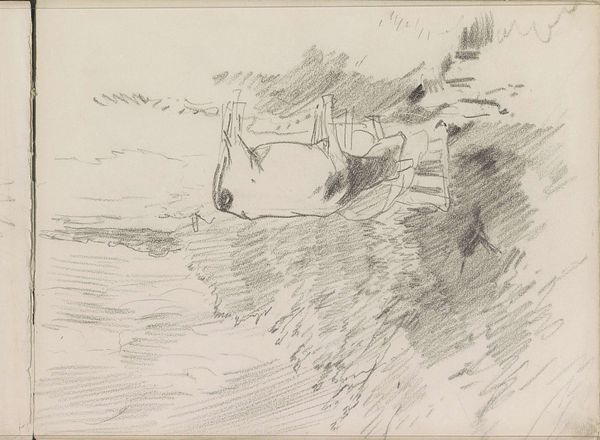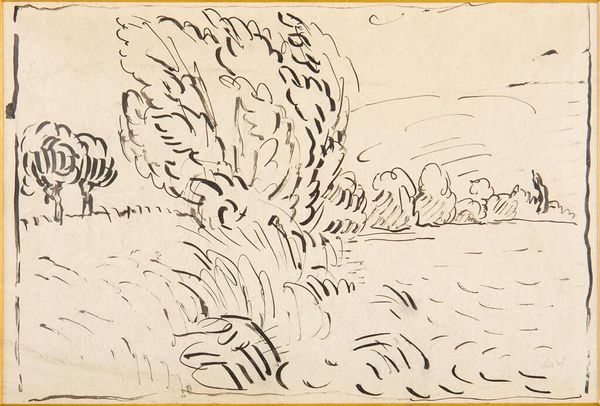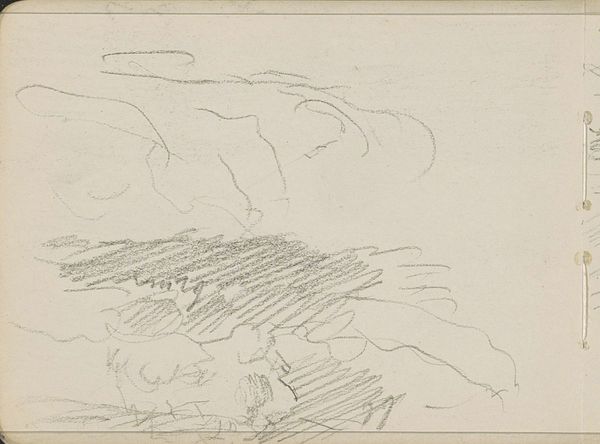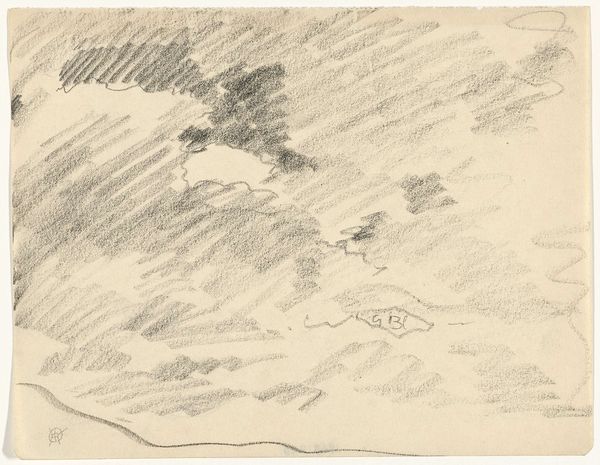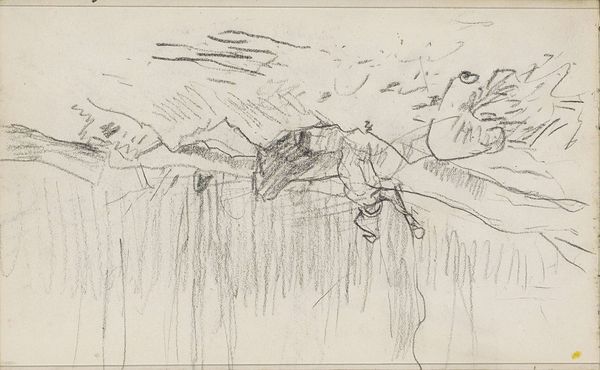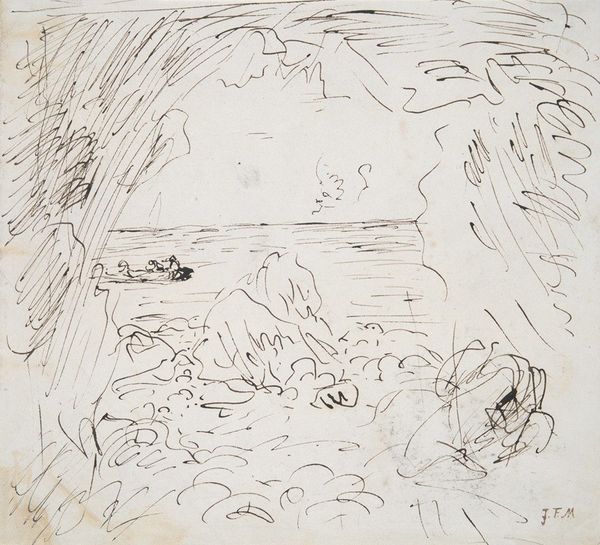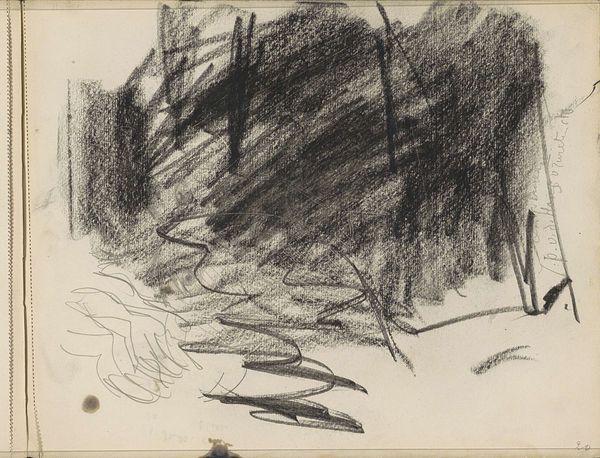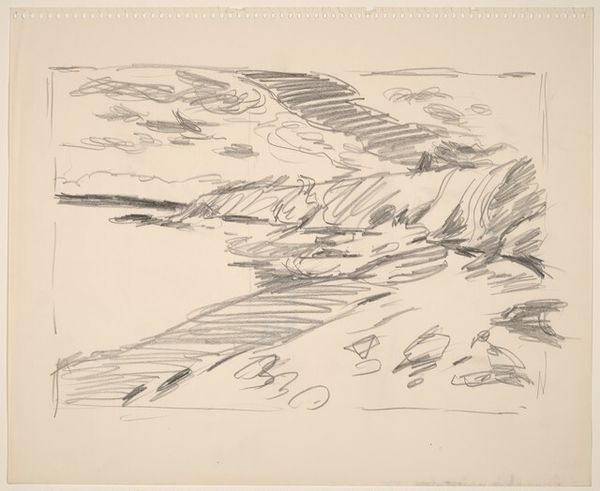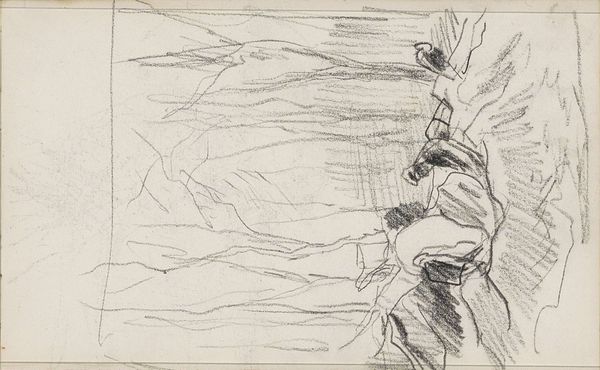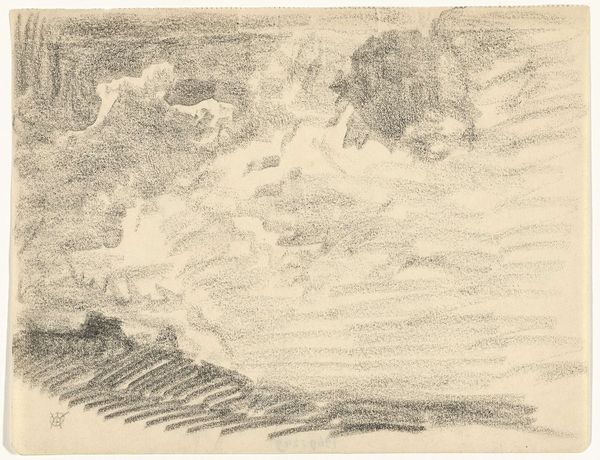
drawing, paper, pencil
#
drawing
#
impressionism
#
landscape
#
paper
#
pencil
Copyright: Rijks Museum: Open Domain
Editor: This is Anton Mauve's "Landschap," a landscape drawing created with pencil on paper around 1886-1888. The scene feels stark, almost barren. What historical currents might have influenced Mauve's depiction of nature here? Curator: This starkness can be read as a visual commentary on the rapid industrialization occurring in the Netherlands during that time. Mauve, part of the Hague School, often depicted rural life. Think about who this art was made for: often wealthier city dwellers who may have been losing touch with that world. What impact does depicting the landscape this way, seemingly untouched by modern hands, have on the viewer's appreciation? Editor: It feels… almost melancholic. Was he perhaps responding to societal anxieties of the time? Curator: Absolutely. Consider how anxieties about progress and loss are gendered. The land itself, in so many artistic and literary traditions, is feminized. When industry disrupts the landscape, it is read as an act of violence. So, the perceived simplicity of Mauve’s landscapes allowed for reflection on those rapid social changes. Who benefits when we valorize “simple” ways of life, and who is left out of that story? Editor: So, in capturing this landscape, Mauve wasn't just drawing a scene, but subtly engaging in a conversation about progress, loss, and maybe even power structures. It is so subtle, but it is now visible. Curator: Exactly! It invites us to think about how landscapes are never neutral. They always carry cultural, social, and even political weight. They are imbued with all kinds of value beyond mere natural beauty. Editor: I never thought a simple landscape drawing could hold so much meaning. Curator: Art always reflects the times it was created in, doesn't it? This conversation has shifted my understanding as well.
Comments
No comments
Be the first to comment and join the conversation on the ultimate creative platform.
